A collection of materials designed to mend punctures or tears in inflatable sleeping surfaces. These typically include adhesive patches, a bonding agent, and sometimes an abrasive tool to prepare the surface. For instance, a vinyl air bed with a slow leak can often be restored to functionality using such a kit, extending its lifespan and usability.
The utility of these sets lies in their ability to provide a cost-effective and convenient solution to common air mattress malfunctions. Rather than replacing an entire inflatable bed, which can be expensive and wasteful, a small investment in mending supplies allows for on-the-spot repairs. Historically, similar repair methods have been employed for various inflatable items, adapting with advancements in materials science and adhesive technologies to provide increasingly durable and reliable results.
The subsequent sections will delve into the components commonly found within these sets, proper application techniques, and preventative measures that can minimize the need for repairs. Information on selecting the appropriate kit for different types of inflatable surfaces will also be presented.
Air Mattress Mending
Maximizing the effectiveness of inflatable bed mending requires adherence to specific techniques and considerations. The following guidelines offer insights into achieving durable and reliable repairs.
Tip 1: Surface Preparation is Paramount: Thoroughly clean and dry the area surrounding the puncture. Use the provided abrasive tool to gently roughen the surface. This enhances adhesive bonding.
Tip 2: Adhesive Application: Apply a thin, even coat of adhesive to both the patch and the prepared surface on the air mattress. Avoid excessive application, which can weaken the bond.
Tip 3: Patch Placement: Carefully position the patch over the puncture, ensuring complete coverage. Avoid trapping air bubbles beneath the patch.
Tip 4: Apply Pressure: Apply firm, consistent pressure to the patch for the recommended duration, as specified in the instructions. This facilitates optimal adhesive contact and curing.
Tip 5: Cure Time: Allow the adhesive to fully cure before inflating the air mattress. Premature inflation can compromise the bond and lead to failure.
Tip 6: Selecting the Correct Kit: Ensure compatibility between the kit and the air mattress material (e.g., vinyl, flocked surfaces). Using an incompatible kit can lead to ineffective adhesion.
Tip 7: Preventative Measures: Protect air mattresses from sharp objects and abrasive surfaces. Proper storage and handling can minimize the likelihood of punctures.
Implementing these recommendations will increase the success rate of air mattress repairs and extend the lifespan of inflatable sleeping surfaces.
The next section provides an overview of common failures and how to diagnose the source of the puncture before undertaking the repair.
1. Adhesive Bond Strength
Adhesive bond strength is a critical determinant of the overall efficacy of a patch repair kit for air mattresses. It dictates the ability of the patch to adhere firmly to the air mattress surface, preventing air leakage and ensuring a lasting repair.
- Chemical Composition of the Adhesive
The chemical makeup of the adhesive directly influences its bonding capabilities. Adhesives formulated with polymers exhibiting high tensile strength and flexibility are better suited for air mattress repairs, as they can withstand the stresses of inflation and deflation cycles. For instance, cyanoacrylate-based adhesives often provide a rapid initial bond, but may lack the flexibility required for long-term performance compared to vinyl-specific adhesives.
- Surface Compatibility and Preparation
Adhesive bond strength is contingent on the compatibility between the adhesive and the air mattress material (typically vinyl or flocked materials). Proper surface preparation, including cleaning and roughening the area around the puncture, is essential. Failure to remove contaminants or create a textured surface can significantly reduce the adhesive’s ability to form a strong, lasting bond. Using an inappropriate adhesive on a flocked surface, for example, will likely result in premature patch failure.
- Environmental Factors During Application
Environmental conditions, such as temperature and humidity, can affect the curing process and, consequently, the adhesive bond strength. Extreme temperatures or high humidity levels may inhibit proper curing, leading to a weaker bond. Adhesives typically perform optimally within a specified temperature range; adhering to these guidelines is crucial for achieving maximum bond strength.
- Application Technique and Pressure
The manner in which the adhesive is applied and the pressure exerted on the patch during the curing process impact bond strength. A thin, even coat of adhesive is generally preferred over a thick application, as excessive adhesive can weaken the bond. Applying consistent pressure to the patch for the recommended duration ensures optimal contact between the adhesive and the air mattress surface, promoting a stronger, more durable bond.
The interplay of these facets dictates the long-term success of any repair effort involving these kits. Inadequate adhesive bond strength renders the entire mending process futile, leading to recurring leaks and ultimately negating the value of the kit. Therefore, selecting a kit with a high-quality adhesive, preparing the surface meticulously, and adhering to proper application techniques are paramount for achieving a reliable and durable repair.
2. Patch Material Durability
Patch material durability is a central factor determining the longevity and effectiveness of any patch repair kit intended for inflatable sleeping surfaces. The material’s ability to withstand stress, resist tearing, and maintain a secure bond directly correlates with the lifespan of the repair and the continued functionality of the air mattress.
- Tensile Strength and Tear Resistance
The material’s capacity to resist stretching and tearing under stress is paramount. Kits employing patches made from high-tensile strength vinyl or reinforced fabrics offer greater resistance to puncture propagation and edge peeling. For instance, a patch constructed from a thin, low-grade vinyl is likely to fail prematurely, especially in areas subject to frequent movement or weight concentration, such as near seams or edges. Conversely, a patch made of reinforced PVC will better withstand these stresses.
- Adhesive Compatibility and Bond Retention
Patch material must exhibit excellent compatibility with the adhesiv
e provided in the kit. Surface treatments or chemical compositions that inhibit adhesion can compromise the bond. Materials designed with enhanced adhesive receptivity, such as those with textured surfaces or specific polymer coatings, promote stronger and more durable bonds. A patch material that readily accepts and retains the adhesive bond will demonstrably extend the repair’s service life. - Environmental Resistance (UV, Temperature)
Exposure to ultraviolet (UV) radiation and temperature fluctuations can degrade patch materials over time, leading to embrittlement, discoloration, and loss of elasticity. Patches formulated with UV inhibitors and temperature-stable polymers exhibit superior resistance to these environmental factors. For example, a patch exposed to prolonged sunlight may become brittle and prone to cracking if not specifically formulated for UV resistance. Selecting a kit with environmentally resistant patches is particularly important for air mattresses used outdoors or stored in areas subject to temperature extremes.
- Flexibility and Conformability
The patch material must possess sufficient flexibility to conform to the contours of the air mattress surface, particularly in areas prone to creasing or flexing. Rigid or inflexible patches may create stress points that ultimately lead to patch detachment or air mattress failure. A patch with good conformability distributes stress more evenly across the repaired area, reducing the risk of leaks and promoting a more durable repair. For example, a patch designed for use on a flocked surface must be flexible enough to maintain contact with the underlying material despite the irregularities of the flocking.
These characteristics, working in concert, define the overall efficacy of a patch within the context of an inflatable bed mending kit. Deficiencies in any one of these areas can significantly diminish the repair’s lifespan and the air mattress’s continued usability. Selecting a kit with patches designed for optimal durability ensures a more reliable and long-lasting solution to inflatable bed punctures.
3. Surface Preparation Critical
Effective repair of air mattresses using patch kits fundamentally depends on meticulous surface preparation. This process, encompassing cleaning, drying, and often abrasion of the area surrounding the puncture, directly influences the adhesive bond between the patch and the air mattress material. Insufficient or improper preparation invariably leads to compromised adhesion, resulting in premature patch failure and subsequent air leakage. For instance, applying a patch directly to a dirty or oily surface prevents the adhesive from establishing a secure bond with the underlying material, irrespective of the quality of the kit’s components. The causal relationship is direct: inadequate preparation causes adhesive failure.
The importance of surface preparation is exemplified by considering flocked air mattresses. These surfaces possess a textured, fibrous layer that must be thoroughly removed or flattened in the immediate vicinity of the puncture to expose the underlying vinyl. Failure to adequately address the flocking creates an uneven bonding surface, significantly reducing adhesion. Similarly, on standard vinyl air mattresses, residual mold release agents or plasticizers can impede adhesive bonding. Abrasive treatment, typically involving fine-grit sandpaper or a similar tool provided in the kit, creates a microscopically roughened surface, increasing the surface area available for adhesion and promoting a stronger bond.
In summary, surface preparation is not merely a preliminary step but an integral component of the air mattress mending process. Its proper execution is paramount to achieving a durable and reliable repair. Neglecting this critical stage undermines the effectiveness of even the highest-quality kits. By understanding the cause-and-effect relationship between surface preparation and adhesive bond strength, users can significantly improve their chances of successfully mending air mattresses and extending their lifespan. Challenges include ensuring complete removal of contaminants and achieving consistent surface roughness without damaging the mattress material. The principle of meticulous preparation extends beyond air mattress repair, underscoring the importance of proper groundwork in any adhesive-based application.
4. Correct Kit Selection
The efficacy of any air mattress mending process is intrinsically linked to the selection of an appropriate patch application set. Matching the kit’s characteristics to the specific properties of the inflatable surface is crucial for achieving a durable, lasting repair. A mismatch between the kit and the air mattress material can result in adhesion failures and compromised performance.
- Material Compatibility
The primary consideration is the material composition of the air mattress. Common materials include PVC (vinyl), flocked PVC, and TPU (thermoplastic polyurethane). A kit designed for PVC may not adhere effectively to TPU, and vice versa. Kits specifically formulated for flocked surfaces typically include adhesives and application tools tailored to penetrate the fibrous layer and bond to the underlying vinyl. Using an inappropriate kit can result in weak adhesion or damage to the air mattress material. For example, using a solvent-based adhesive on a TPU mattress may cause degradation of the material.
- Adhesive Type
Various adhesive types exist, each with distinct properties and bonding capabilities. Vinyl adhesives are commonly solvent-based, offering strong adhesion to PVC. TPU adhesives are often water-based and formulated for flexibility and compatibility with polyurethane materials. Cyanoacrylate adhesives (super glue) are generally not recommended for air mattress repairs due to their inflexibility and tendency to crack under stress. Selecting an adhesive that is chemically compatible with both the patch and the air mattress material is essential for long-term bond integrity. Incorrect adhesive choice is a frequent cause of repair failure.
- Patch Material Composition
The patch material should match or be compatible with the air mattress material. Vinyl patches are suitable for vinyl air mattresses, while TPU patches are appropriate for TPU mattresses. Using a patch made of a different material can create stress points due to differing expansion and contraction rates, leading to premature failure. Additionally, the patch thickness should be considered. A patch that is too thick may create an uneven surface and be prone to peeling, while a patch that is too thin may lack sufficient strength. Kits offering a variety of patch sizes and thicknesses provide greater flexibility for addressing different types of punctures.
- Kit Contents and Application Tools
A comprehensive kit should include not only adhesive and patches but also essential application tools. These tools typically include an abrasive pad for surface preparation, an applicator brush or nozzle for precise adhesive application, and a pressure roller or weight for ensuring uniform contact between the patch and the air mattress surface during the curing process. The absence of these tools can complicate the repair process and compromise the quality of the bond. A kit with clear, detailed instructions is also benefic
ial, particularly for individuals unfamiliar with air mattress repair techniques.
In conclusion, the selection of an appropriate patch application set involves careful consideration of material compatibility, adhesive type, patch composition, and the inclusion of necessary application tools. Failure to address these facets can significantly reduce the likelihood of a successful and durable repair. Matching the kit to the specific properties of the air mattress ensures optimal adhesion, longevity, and overall performance of the mending effort.
5. Long-Term Air Retention
Long-term air retention serves as the ultimate measure of efficacy for any inflatable bed mending set. The primary objective of utilizing such a kit is to restore and maintain the air-holding capacity of a punctured or damaged inflatable sleeping surface over an extended period. If a repair fails to prevent air leakage beyond the initial application, the kit’s purpose is fundamentally unfulfilled. A direct correlation exists: a high-quality repair set, properly applied, results in demonstrably superior long-term air retention. Conversely, a substandard kit or flawed application yields rapid air loss, negating the repair effort. For example, a kit employing an inferior adhesive may initially seal a puncture, but the bond weakens over time due to stress from inflation/deflation cycles, resulting in gradual air loss. The initial impression of a successful repair proves deceptive.
Achieving prolonged air retention necessitates a confluence of factors inherent in both the design and the application of the mending materials. These factors include the tensile strength and flexibility of the patch material, the adhesive’s bonding characteristics under sustained pressure and temperature variations, and the meticulousness with which the surface preparation is executed. Real-world scenarios underscore the importance of these considerations. For instance, a camping enthusiast relying on an air mattress during a multi-day trip depends entirely on the reliability of the repair. A slow leak developing overnight due to a poorly executed repair can lead to significant discomfort and disrupt sleep, highlighting the practical consequences of inadequate long-term air retention. Successful repairs, in contrast, allow for uninterrupted use of the air mattress throughout the trip.
In summary, long-term air retention is not merely a desirable attribute but the defining characteristic of an effective air mattress mending kit. It reflects the quality of the kit’s components, the appropriateness of the application technique, and the overall durability of the repair. Challenges in achieving prolonged air retention include accounting for variations in air mattress materials, environmental conditions, and user skill levels. The pursuit of this objective directly aligns with the broader theme of extending the lifespan of inflatable products and minimizing waste. The kit’s ability to achieve this objective is a yardstick to measure effectiveness of the tools, kits and materials.
Frequently Asked Questions
This section addresses common inquiries regarding the application, effectiveness, and selection of air mattress repair materials. The information provided aims to clarify misconceptions and offer practical guidance for successful mending.
Question 1: Is preparation of the air mattress surface prior to applying a patch truly necessary?
Adhesive bonding requires a clean, textured surface. Surface contaminants, such as oils or dirt, inhibit adhesion, leading to premature patch failure. Abrasion roughens the surface, increasing the surface area available for bonding and creating a mechanical interlock between the adhesive and the material. Therefore, proper preparation is essential for a durable repair.
Question 2: Can any adhesive be used with a patch for repairing air mattresses?
Adhesive compatibility is critical. Adhesives formulated for vinyl are generally suitable for most air mattresses. However, cyanoacrylate adhesives (super glue) are not recommended due to their inflexibility and tendency to crack. The ideal adhesive forms a flexible, waterproof bond that withstands repeated inflation and deflation cycles. Confirm adhesive compatibility with the air mattress material before application.
Question 3: How long should pressure be applied to a patch after application?
The duration of pressure application varies depending on the adhesive and the kit instructions. Typically, sustained pressure for several minutes is required to ensure optimal contact between the patch and the air mattress surface. Clamping or weighting the patched area during the curing process can further enhance adhesion. Adhering to the recommended pressure application time is crucial for a secure bond.
Question 4: Can an air mattress be inflated immediately after applying a patch?
Premature inflation can compromise the adhesive bond. The adhesive requires time to fully cure and achieve maximum strength. The recommended curing time varies depending on the adhesive type and environmental conditions. Typically, a curing time of several hours is advised before inflating the air mattress. Patience is crucial for a lasting repair.
Question 5: Are all patch application sets suitable for flocked air mattresses?
Application sets intended for standard vinyl mattresses are often inadequate for flocked surfaces. The fibrous layer of flocking inhibits direct contact between the adhesive and the vinyl. Kits designed for flocked surfaces typically include adhesives and application tools specifically designed to penetrate or remove the flocking to ensure a secure bond with the underlying vinyl. Selecting a kit specifically designed for flocked surfaces is essential for a successful repair.
Question 6: What constitutes a sign of an impending patch failure?
Early signs of impending patch failure include the gradual reappearance of air leakage, the lifting of patch edges, or the development of bubbles beneath the patch. These symptoms indicate a weakening of the adhesive bond and the potential for complete patch detachment. Addressing these issues promptly by reapplying adhesive or replacing the patch can prevent further damage and extend the lifespan of the air mattress.
In conclusion, a clear understanding of the factors influencing the success of air mattress mending is paramount. Proper preparation, adhesive compatibility, pressure application, curing time, and kit selection contribute to durable and lasting repairs.
The subsequent section provides guidance on preventing common air mattress failures.
The Critical Role of Patch Repair Kits
This exploration has underscored the multifaceted nature of “patch repair kit for air mattress” functionality. Beyond simple provision of patching materials, the quality of components, proper application, and user awareness are paramount in achieving successful, long-lasting repairs. Adhesive strength, patch material durability, and meticulous surface preparation dictate the efficacy of these sets. Choosing a kit specifically tailored to the air mattress material and adhering to recommended application techniques are critical factors in preventing premature failure and maximizing air retention.
As reliance on inflatable sleeping surfaces continues, the value of effective repair solutions will only increase. Individuals and organizations alike must prioritize understanding the principles of air mattress mending to extend the lifespan of these products,
reduce waste, and ensure reliable performance when needed most. Diligence in kit selection and repair execution ensures these temporary measures contribute to long-term usability and resourcefulness. The proper tools, if used correctly, can add value to any household.


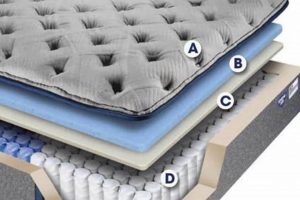
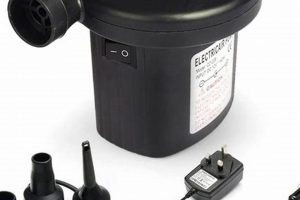
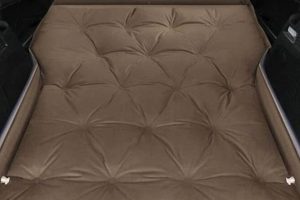
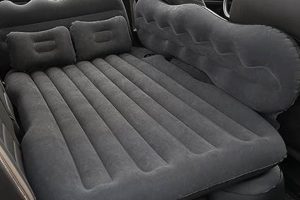
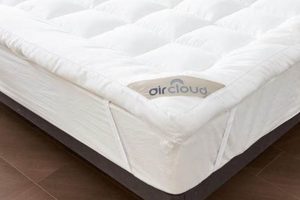
![Best Foot Pump Air Mattress [Guide] - On Air Comfort Organic & Natural Mattress Buyer’s Guide: Non-Toxic Sleep Solutions Best Foot Pump Air Mattress [Guide] - On Air Comfort | Organic & Natural Mattress Buyer’s Guide: Non-Toxic Sleep Solutions](https://mattressworldpa.com/wp-content/uploads/2025/07/th-6506-300x200.jpg)